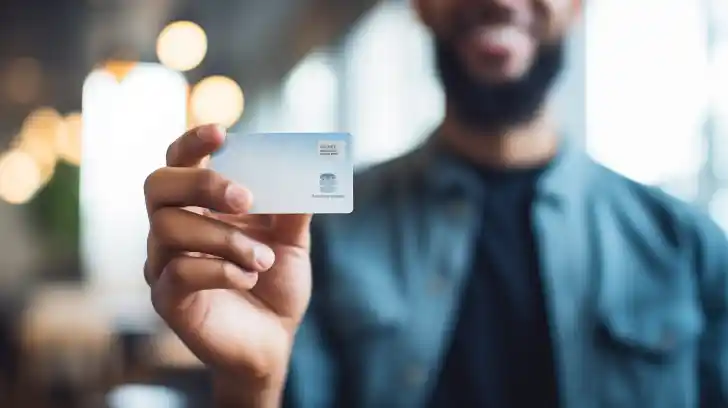If you’re eyeing Invisalign to straighten your smile without the bulk of traditional braces, you might be wondering how far your budget can stretch. The cost of orthodontic treatment, especially with clear aligners like Invisalign, can feel daunting for many—especially senior homeowners who have to consider every expense carefully.
But what if dental insurance could ease that financial burden? It’s a question worth exploring as you seek a solution that won’t disrupt your finances or lifestyle.
Here’s an important fact: while most dental insurance plans may cover 25% to 50% of Invisalign treatments, navigating these benefits can be tricky. This article aims to unravel the complexities of dental insurance coverage for clear aligner therapy and provide you with insights into maximizing your policy’s potential.
You’ll discover alternative funding opportunities such as FSA and HSA accounts, compare costs with and without insurance, and learn how certain healthcare policies can make a difference in managing out-of-pocket expenses.
Get ready to flash that confident smile without breaking the bank!
Key Takeaways
- Dental insurance often pays for 25% to 50% of Invisalign costs, but it depends on your plan’s details.
- Look into in – network orthodontists with your dental plan to save money on Invisalign treatment.
- Use a Flexible Spending Account (FSA) or Health Savings Account (HSA) to cover extra costs that insurance doesn’t pay.
- The Affordable Care Act doesn’t always include adult dental care, but you can buy separate plans during enrollment.
- Knowing how much insurance covers for Invisalign can help you compare prices and find the best deal.
Understanding Dental Insurance Coverage for Invisalign

Delving into dental insurance for Invisalign, you’ll discover a variety of factors that determine whether your plan is an ally in achieving that seamless smile. It’s imperative to differentiate between the potential support provided by insurers when choosing an in-network provider compared to venturing out-of-network, as this can significantly impact your financial strategy for orthodontic care.
Factors influencing coverage
Dental insurance can help you pay less for Invisalign, a way to straighten your teeth. The amount covered by your plan depends on several things.
- Your insurance plan type: Some plans offer more coverage for orthodontic care than others. Check if your plan has orthodontic benefits and what they include.
- Age limits: Many insurers cover braces only for kids and teens. If you’re older, your plan might not help with Invisalign costs.
- Medical need: If straightening your teeth is medically necessary, insurance could pay part of it. Cosmetic reasons may not be covered.
- Yearly maximums: Plans have a top limit per year for dental care. This cap affects how much they will pay towards Invisalign in a single year.
- Lifetime limits: Insurance might only pay a set amount for orthodontics over your life. Once you hit this limit, you’ll need to pay out of pocket.
- Choice of dentist: Staying in-network means lower costs because these dentists have agreed-upon prices with your insurer. Out-of-network dentists could cost more.
In-network vs. out-of-network providers
You might wonder what the deal is with in-network and out-of-network providers when it comes to your dental insurance covering Invisalign. It’s simpler than you think. In-network providers have a special deal with your insurance company that gives you lower prices for their services.
This means if you choose an in-network orthodontist for getting Invisalign, you’ll usually pay less money from your own pocket.
But what about out-of-network options? They don’t have the same contract with your insurer, so while they still may accept your insurance, it often costs more for you. Each dental plan has its own list of who is in or out of their network, which affects how much you’ll spend on teeth straightening treatments like Invisalign.
Picking an in-network provider can really help keep costs down and make managing bills easier.
Keep this info close when looking into Humana dental plans or MetLife insurance for cosmetic treatment like clear aligners. Check those lists before deciding where to go for fixing misaligned teeth—it could save quite a bit of money on achieving better oral health! If saving cash sounds good to you, keep these differences between providers in mind as part of planning your treatment path.
Alternatives to Insurance for Invisalign Costs

If your dental insurance falls short, fear not. Exploring options like Flexible Spending Accounts and Health Savings Accounts could unlock paths to manage Invisalign expenses effectively.
Flexible Spending Accounts (FSA)
You can use a Flexible Spending Account (FSA) to help pay for Invisalign, which is a clear way to straighten teeth. If your job gives you an FSA, you can put part of your paycheck into it before taxes.
This money helps cover medical costs that insurance doesn’t fully pay for, like some parts of getting Invisalign.
Using an FSA means you save money because the cash comes out before taxes are taken away. You keep more of what you earn and use it for your dental health needs. The best part? You don’t have to worry about breaking the bank while getting a brighter smile with Invisalign!
Health Savings Accounts (HSA)
Health Savings Accounts (HSA) are special accounts you can use to pay for medical costs, including Invisalign. If your dental insurance doesn’t fully cover the cost of your Invisalign treatment plan, an HSA could be a big help.
It allows you to use pre-tax dollars to pay for eligible health expenses, which can save you money.
HSAs are good for paying for things that your insurance might not cover. For instance, if only part of your orthodontic device is paid by insurance, you can use HSA funds for the rest.
The IRS says it’s okay to use HSA money for dental work like Invisalign when those costs aren’t paid back by insurance.
It’s important though to check what your own HSA will allow. Every account is different and some might not let you pay for all types of orthodontic care. Make sure you know what yours covers so there are no surprises later on!
Affordable Care Act Enrollment: Opportunities for Dental Coverage
You might think Affordable Care Act plans must cover dental for everyone, but that’s not the case. These health plans don’t have to include adult dental care. However, they do cover kids’ teeth.
So if you’re signing up through the ACA and want dental coverage as a senior homeowner, you’ll need to look closely at each plan.
Most times, you can buy a separate dental plan during your ACA enrollment period. This means more chances to find something that fits what you need and what you can pay for—especially if Invisalign is on your mind.
Look carefully at the details of these plans because they all offer different benefits and prices.
Comparing Invisalign Costs: With and Without Insurance
As senior homeowners, understanding the financial impact of Invisalign treatment on your budget is crucial. Insurance coverage can significantly alter the total cost of your dental work. Let’s delve into an analysis comparing Invisalign costs when you have dental insurance versus when you don’t.
| Treatment Option | Cost Without Insurance | Cost With Insurance |
|---|---|---|
| Invisalign (Full Comprehensive Package) | $4,500 – $8,000 | Varies (Partially covered by some plans) |
| Invisalign (Moderate Case) | $3,500 – $6,500 | Varies (Often covered to the same extent as traditional braces) |
| Invisalign (Minor Correction) | $2,000 – $4,000 | Varies (Coverage may be limited; dependent on specific plan details) |
| Traditional Braces | $1,700 – $7,000 | Often covered more extensively by insurance |
Bear in mind, dental insurance coverage for Invisalign can range from partial to comprehensive, depending on your specific plan. Inspect your insurance details or discuss them with your provider to understand the benefits available to you. When comparing the costs, remember that many insurance plans offer similar coverage options for Invisalign as they do for traditional braces, potentially making this modern treatment accessible within your budget.
Conclusion
You might worry about the cost of Invisalign, but remember, your dental insurance could cover part of it. Check with your insurance and explore using an FSA or HSA to make smiles brighter without breaking the bank.
Talk to a trained Invisalign doctor for help with payment options. Getting that perfect smile might be more in reach than you think!
To learn more about how the Affordable Care Act might help cover your Invisalign treatment, check out our guide on Affordable Care Act enrollment.
FAQs
1. Can dental insurance pay for Invisalign or is it just for traditional metal braces?
Yes, some dental insurance plans cover Invisalign the same way they do for traditional metal braces, but you should check your plan.
2. Are there any other clear options besides Invisalign that might be cheaper?
ClearCorrect and SmileDirectClub are two alternatives to Invisalign that may cost less and still straighten teeth.
3. What if I have an HMO plan, will it cover clear braces like Invisalign?
HMO plans sometimes offer benefits for orthodontic devices such as clear or ceramic braces; however, it’s important to confirm with your specific plan details.
4. Can I use money from my Health Savings Account (HSA) to help with the cost of orthodontists’ treatments?
You can often use funds from a Health Savings Account (HSA) to help pay for treatments by orthodontists, including procedures like getting lingual or ceramic braces.
5. Do I need a special diagnosis from an orthodontist to get coverage in Missouri for invisible aligners like ClearCorrect?
To get coverage for invisible aligners under many health insurance policies in Missouri, you may need a medical examination and a proper diagnosis demonstrating their compliance and necessity.
Source Links
- https://clearsmilecharlotte.com/blog/dental-insurance-for-invisalign-need/
- https://www.invisalign.com/invisalign-cost/how-to-pay-for-invisalign
- https://www.humana.com/dental-insurance/dental-resources/does-dental-insurance-cover-invisalign
- https://www.byte.com/community/resources/article/invisalign-insurance-coverage/
- https://directbenefits.com/articles/dental-insurance/Invisalign-Insurance-Coverage-and-Cost
- https://www.insurancecompany.com/dental-insurance-articles/does-dental-insurance-cover-invisalign.html
- https://www.gillfresnodentist.com/insurance-for-invisalign





